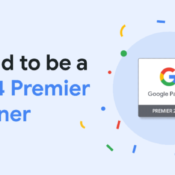/
/
A Copy of A Copy of A Copy
Just a few weeks ago, I was able to attend Pubcon in Las Vegas, NV — an international conference in which industry leaders from across the digital marketing realm come together to impart their wisdom to attendants eager to absorb new information about their area of expertise — and one thing became clear after attending a few of their content-focused sessions: Original ideas are a thing of the past.
This is not a criticism of Pubcon or their presenters, but rather the unique challenge that most content marketers are faced with in the digital age. The Internet is overrun with content both good and bad, and with Google placing an increased emphasis on content that ranks high in terms of user engagement, the value of content that stands out is now more important than ever. But how does one stand out in a crowd of millions of people, with no guarantee that your content is as original as you think it is?
It is all about how you package it. Once you’ve identified a message worth sending or an idea worth sharing or a concept worth discussing, don’t fret over whether or not you were the first person to discover it. As the title of this blog post suggests, everything on the Internet is a copy of a copy of a copy. I’m certainly not suggesting you steal an idea from someone else — I want to make that clear. Be sure to cite sources as much as you can and give credit where credit is due. But don’t sit at your desk and tear your hair out trying to come up with a blog post topic that no one else on the Internet has covered — because there is no such thing anymore, with few exceptions.
Understanding your audience is the first step. Identifying content that is valuable and insightful to that audience is the second. The third step? Figuring out how to best present that content. It doesn’t have to be a blog post. It can be a video. It can be a presentation. It can be a whitepaper. It can be an infographic. Setting yourself apart from the competition and establishing yourself as a valuable resource of information for your target audience is as much about the content as it is about the format.
That outside-the-box thinking you’ve been using to come up with ideas for content? Try applying it to how your content is being presented. Don’t scrap a good message just because you weren’t the first one to deliver it. Consider how it has been delivered before and how you could deliver it differently.
Recent Posts
Mudd Advertising
Let’s leverage!
Mudd Advertising
Politics Schmolitics!
Mudd Advertising
Mudd has been promoted to Google Premier Partner
All Categories
Tags
anonymous website visitor identification
automotive
branding
cable
case study
chevrolet
chevy
data
digital marketing
direct marketing
display
dynamic inventory display
facebook
first party
google
google analytics
google premier partner
internet marketing
local seo
Matthew Moody
media
mobile search
mobile seo
MUDDid
online marketing
online video
organic
organic search
pay per click
political
ppc
promotion
retargeting
search engine marketing
search engine optimization
sem
seo
social advertising
social media
social media marketing
strategy
traditional marketing
traditional media
Volunteer Spotlight
youtube




